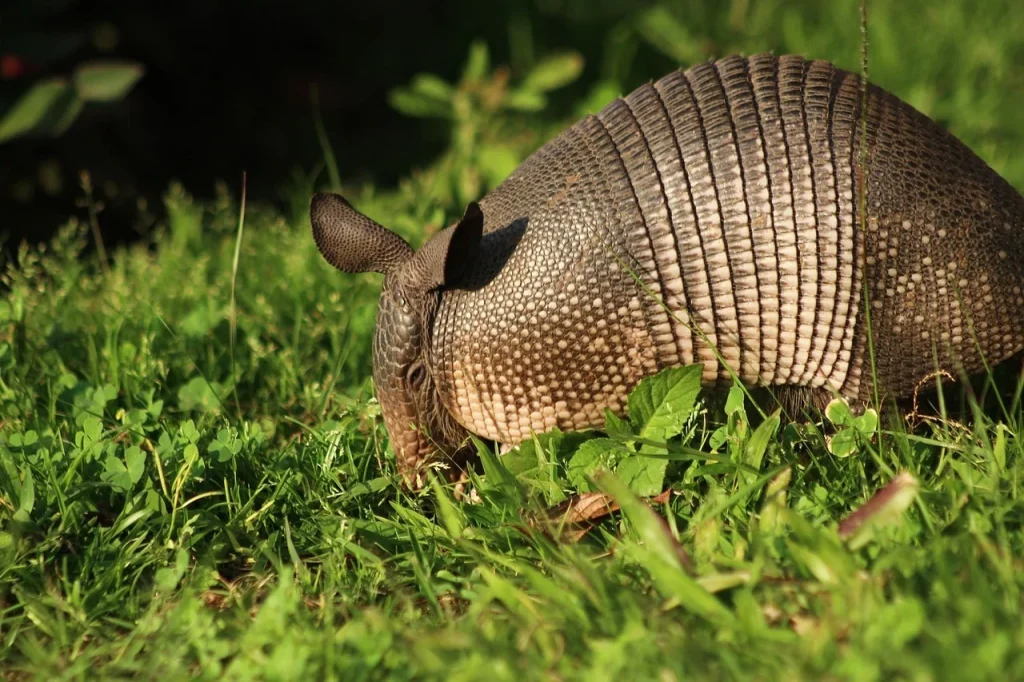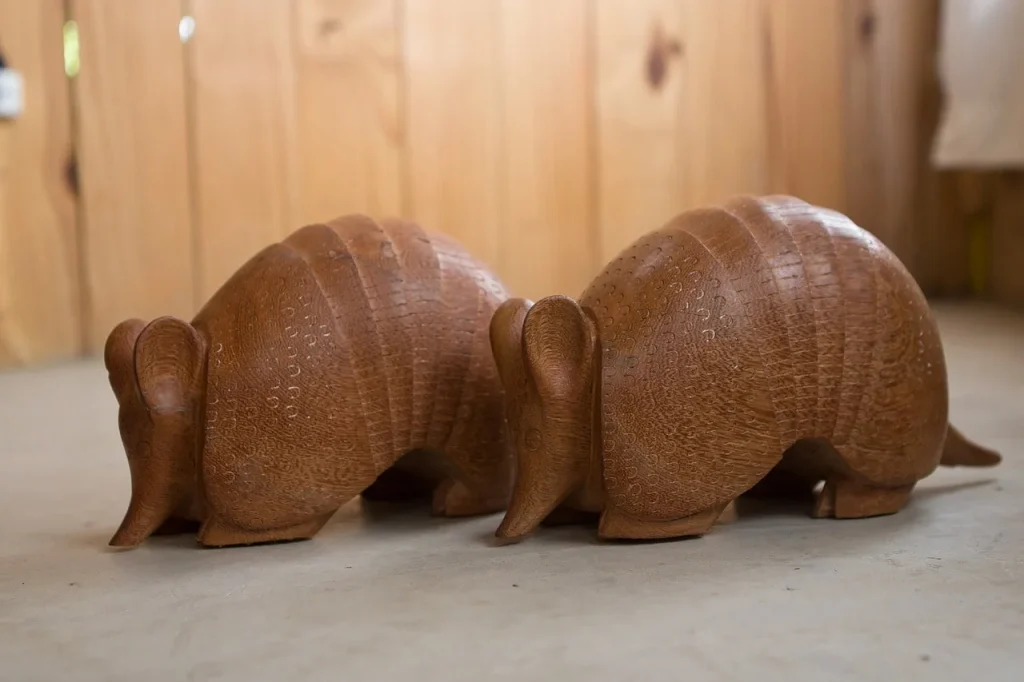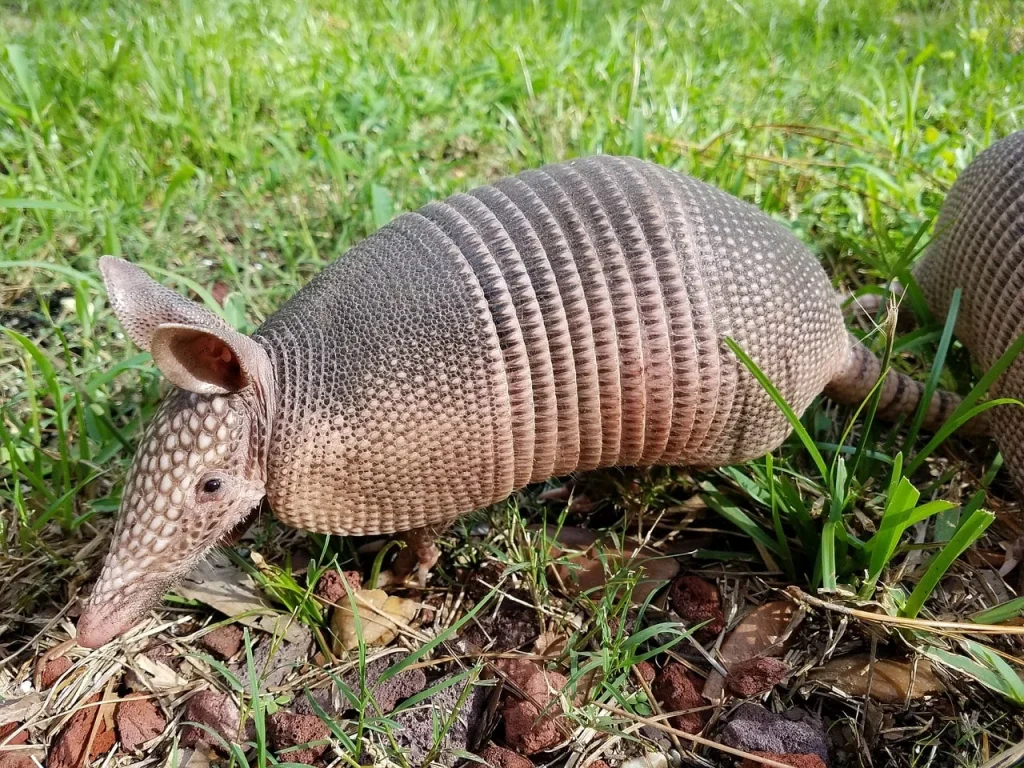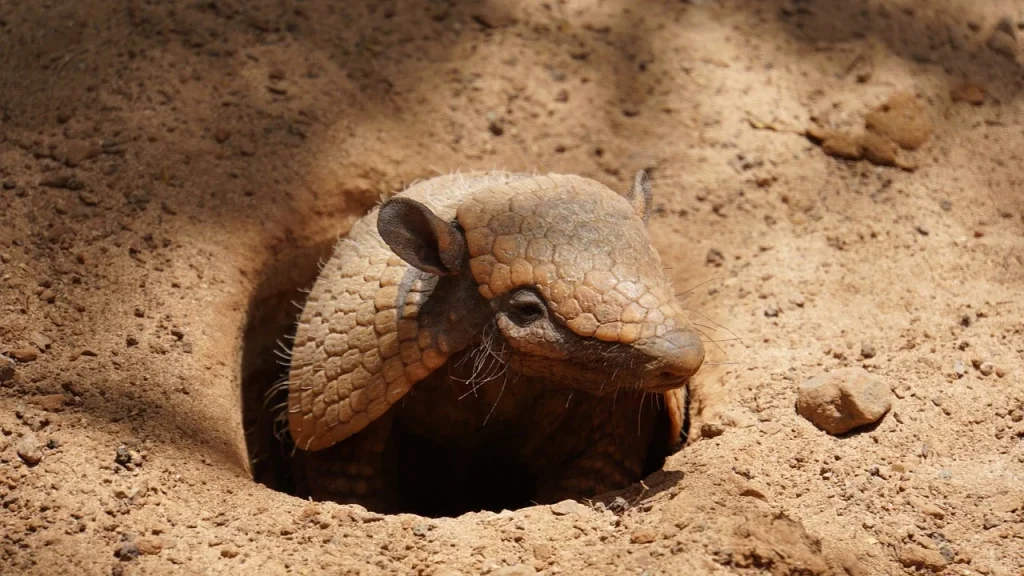Have you ever wondered about those armored wanderers of the wild, known as armadillos? These creatures are not just walking artichoke look-alikes; they’re full of surprises! From their unique armor to their bizarre eating habits, armadillos are truly one of nature’s oddballs.
They can hold their breath underwater for up to six minutes and prefer to live a solitary life, which makes you think, are they just introverts with shells?
As we dive into some interesting facts, you’ll discover just how amazing these little tanks really are. Are you ready to roll into the world of armadillos? Let’s start our journey.
The armadillo, though armored, cannot protect itself from human folly.
Jane Goodall
Armadillo Facts
Get ready to uncover the remarkable aspects of armadillos. Read each fact carefully, because I created a quiz for you at the end of this article to test your knowledge.
- These creatures are part of the Dasypodidae family, which diverged approximately 58 million years ago.
- They have a unique defense mechanism of rolling into a ball, which only the three-banded variety can accomplish perfectly.
- Leathery armor plates cover their body, an adaptation that provides protection but also flexibility.
- Their armor consists of plates made from bone covered in a hard keratinous skin.
- These creatures primarily feed at dusk and dawn, making them crepuscular.
- They are capable of holding their breath for up to six minutes, which is particularly useful when submerged underwater.
- Their name originates from the Spanish ‘armado’, which means ‘armored’.
- Some species can jump up to three feet in the air when startled.
- They can cross bodies of water by inflating their intestines and floating across.
- Pink fairy armadillos are the smallest species, barely measuring 5 inches in length.
- Ants and termites are a significant part of their diet, though they also eat other small invertebrates.
- Their burrows, which can be up to 15 feet deep, help regulate their body temperature in extreme weather.
- Some species’ shells are so hard they can deflect a bullet.

- They are known to carry the bacterium that causes leprosy, which is rare but possible to transmit to humans.
- Armadillos have poor eyesight, relying heavily on their sense of smell.
- They give birth to four genetically identical young from a single egg — a phenomenon known as polyembryony.
- Nine-banded armadillos always give birth to quadruplets.
- Unique among other mammals, they can delay the implantation of the fertilized egg to ensure favorable environmental conditions.
- Their shells are not attached to their bones, which allows flexibility and movement within the armored plates.
- Armadillos are prolific diggers, using their sharp claws to excavate earth for food and to create burrows.
- Their body temperature is lower than that of most other mammals, typically around 33-36°C (91-97°F).
- Giant armadillos can have up to 100 teeth, the most of any terrestrial mammal.
- They are solitary animals, primarily coming together only to mate.
- When under stress, they can develop a condition similar to osteoporosis, where their bones become brittle.
- Their lifespan in the wild is usually only 4-7 years, but they can live up to 20 years in captivity.
- They have the ability to swim well, using a dog-paddle style and taking in air to increase buoyancy.
- Despite their clumsy appearance, they are quite agile over short distances.
- Armadillos have a long sticky tongue that helps them capture insects efficiently.

- Environmental changes and habitat loss pose significant threats to their populations.
- They can be found as far north as Nebraska in the United States and as far south as Argentina.
- Their shells are often used by humans to make musical instruments and other ornamental items.
- In some cultures, they are considered good luck charms against negative forces.
- Reproduction rates can decrease significantly if they feel their habitat is threatened.
- Females have a well-developed maternal instinct, often returning to the same burrow to give birth.
- Their closest relatives are sloths and anteaters, all belonging to the superorder Xenarthra.
- During cold spells, they can go into a torpor state to conserve energy.
- Their armored plates are made up of osseous structures called scutes.
- Migration patterns are generally limited, as they tend to stay within a particular range their entire life.

- Some species are adept at climbing to escape predators or explore their environment.
- Natural predators include coyotes, bears, and large birds of prey.
- They can transmit fungal diseases, such as histoplasmosis, through their droppings.
- Climate change poses a significant risk to their survival due to its impact on ground consistency and insect populations.
- They have been used in medical research due to their unique physiology and disease resistance characteristics.
- During the Great Depression, they were often referred to as Hoover hogs by Americans who hunted them for food.
- Species diversification is evident in their wide range of body sizes and dietary preferences.
- They have been known to cause significant agricultural damage, leading to conflicts with humans.
- Their nocturnal habits help them avoid predation and extreme daytime temperatures.
- Conservation efforts are crucial for some species that are endangered due to habitat destruction and hunting.
- They use different vocalizations to communicate, particularly during mating or when feeling threatened.
- Their ability to contract leprosy has made them invaluable in medical research related to the disease, as they are one of the few non-human species susceptible to the bacteria.
Armadillo Myths

Now that you’re familiar with the facts, let’s dive into separating the truth from the myths about armadillos.
- Armadillos can roll into a perfect ball
Only one species of armadillo, the three-banded armadillo, can roll into a complete ball. This defensive mechanism is used to protect its underbelly and limbs from predators. Other species are unable to achieve this spherical form. - Armadillos are always solitary creatures
It is commonly believed that they prefer solitude. However, the nine-banded armadillo is known to share burrows in colder weather or during their juvenile stage to maintain warmth and safety. - Armadillos have no natural predators
Despite their armored shells, they are preyed upon by various animals. Predators such as coyotes, bobcats, and large birds of prey can penetrate their defenses, especially when targeting young or less protected species. - Armadillos spread leprosy frequently to humans
Although they are known to carry the bacteria that cause leprosy, the transmission to humans is extremely rare. Caution is advised, but the risk posed by casual contact is considered very low. - Armadillos are not good swimmers
Contrary to this belief, they are quite adept swimmers. They are known to hold their breath and walk underwater to cross small streams and ponds, and they can swim by inflating their stomachs and intestines for buoyancy.
No products found.
Armadillo FAQ

Before we arrive at the quiz, let’s first take a good look at the FAQ section. Read these questions carefully to score a perfect ten on the following trivia.
- Can armadillos get rabies?
Yes, they can contract rabies, though it’s quite rare. It’s important to remember that any mammal can get rabies, so it’s best to admire armadillos from a distance! - Are armadillos nocturnal?
Indeed, they are primarily nocturnal creatures. They spend their nights foraging for food and are more active during cooler, darker hours. - Can armadillos be pets?
While it’s possible to keep armadillos as pets in some places, they generally do not make good household companions. They require specific care, can carry diseases like leprosy, and are better suited to the wild. - Are armadillos dangerous?
They are not typically dangerous. They are shy and usually run away when threatened. However, they can scratch or bite if cornered, and they can carry diseases, which is why it’s wise not to handle them without proper knowledge or training. - Can armadillos swim?
Yes, they are surprisingly good swimmers. They can hold their breath and float across water bodies by inflating their stomachs and intestines with air, which helps them paddle across.
Armadillo Trivia

Welcome to the Ultimate Armadillo Quiz! If you can’t dig up the right answers, you might just end up in a burrow of embarrassment.
Armadillo Merch
If you are a true fan of armadillos, then you definitely need to check out our merchandise. You can find T-shirts, hoodies, mugs, and tote bags for your favorite designs. Feel free to check out all the other designs in our shop.
Conclusion
In conclusion, armadillos are truly remarkable creatures with their distinctive armored bodies and surprising behaviors. We’ve seen how they contribute to their habitats and how diverse their species can be.
It’s important to protect these interesting animals, as they continue to fascinate and inspire curiosity. So, keep your eyes peeled for these armored wanderers. Till next time, stay curious and explore more. Cheers.


